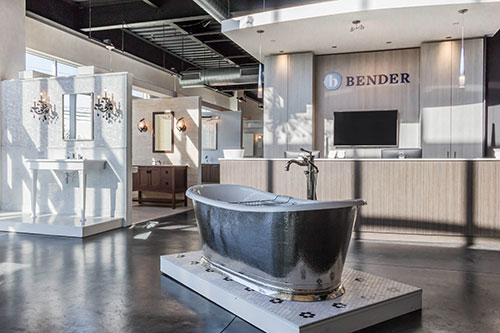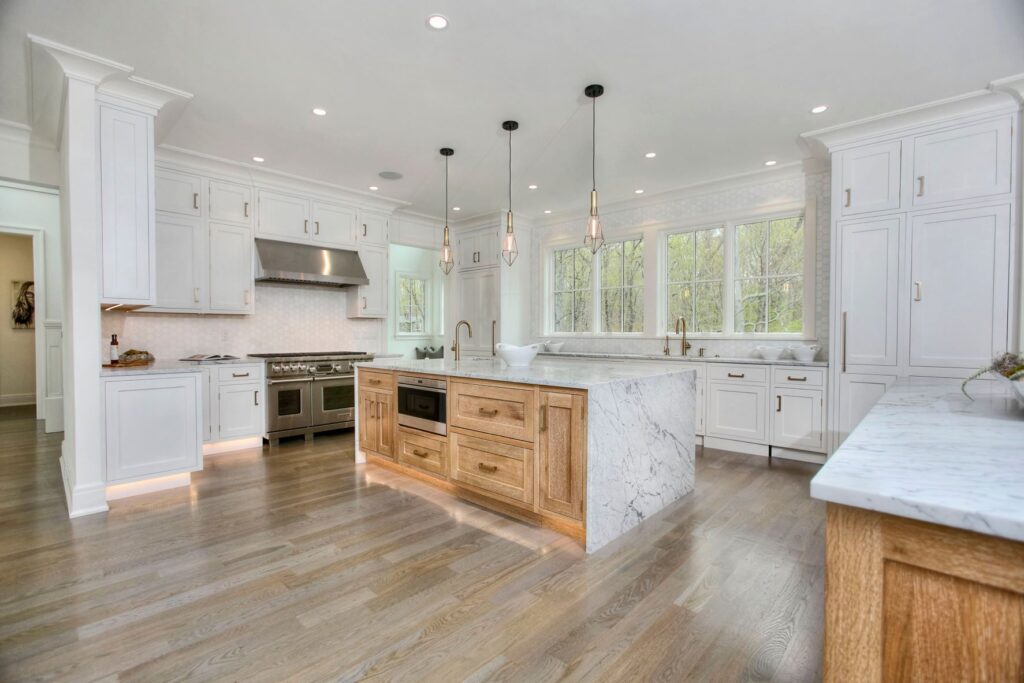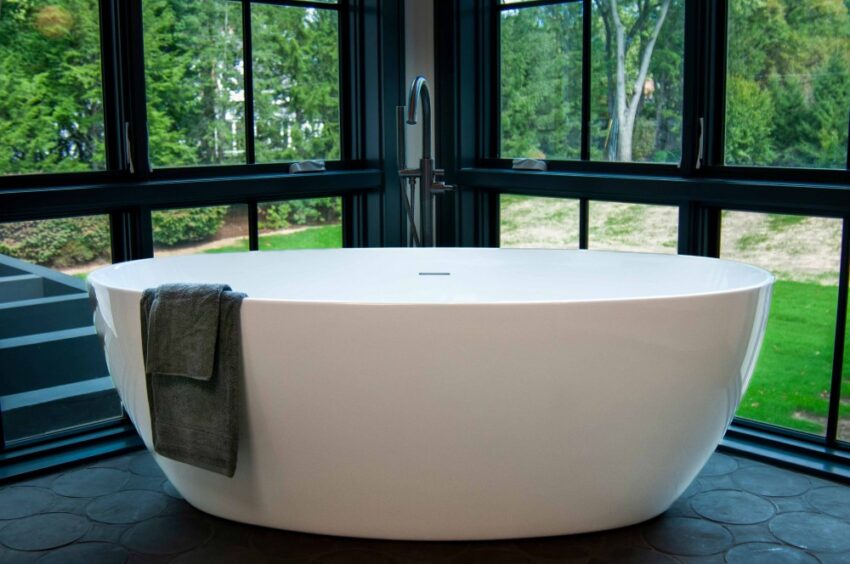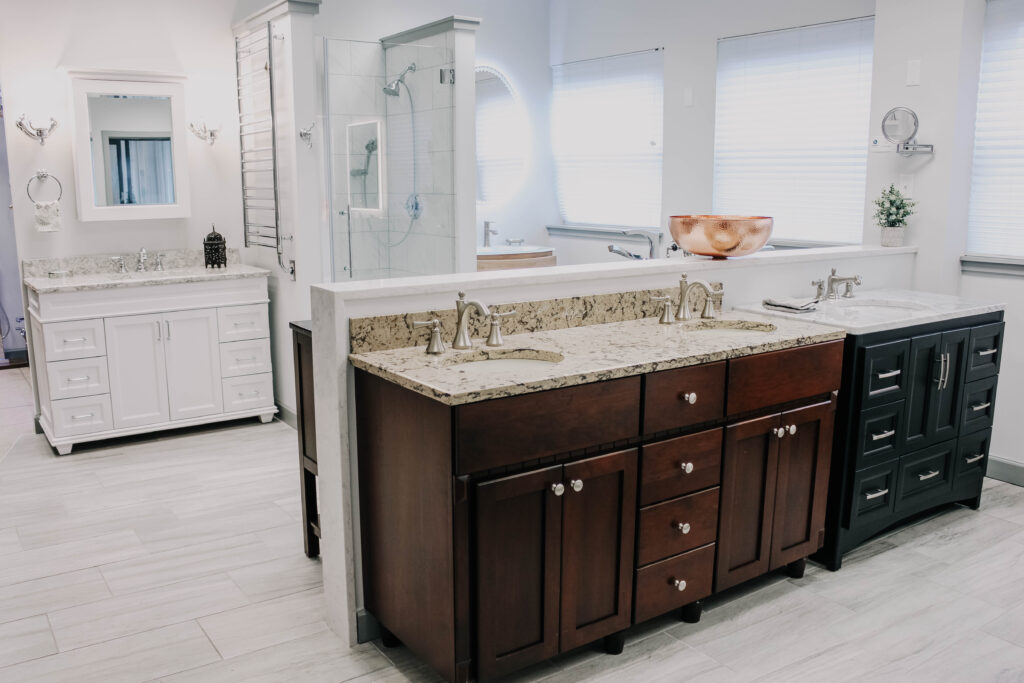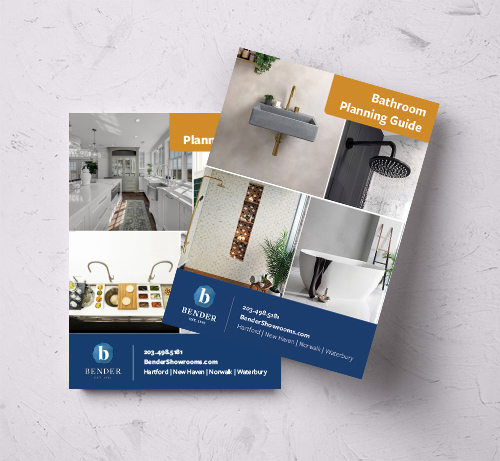In last month’s post, we took a big-picture look at kitchen cabinetry and shared recommendations from Bender’s experts on what any homeowner needs to do before picking out cabinetry. This time, the same Bender pros follow up with advice on navigating the four key areas involved in selecting the actual cabinets that will play such a huge role in transforming your current kitchen into your dream kitchen.
Regardless of your personal tastes – or even your budget – the four areas to focus on are quality, style, maintenance, and specialty storage options.
QUALITY: YOU GET WHAT YOU PAY FOR
The quality of kitchen cabinetry runs the spectrum of the stock selection found at big-box stores (usually made of particleboard), to semi-custom (often available in more durable and desirable plywood), all the way up to custom and high-end options. At the higher end of the spectrum, high-quality materials and craftsmanship offer a luxurious look and feel that will stand up to the test of time.
And there’s more to quality than meets the eye. It’s important to look beyond the cabinets – including hardware – themselves. The manufacturer’s warranty and level of customer service should also be considered. Typically, the better the cabinetry, the better the warranty and customer service.
While we always recommend avoiding the low end of the quality spectrum, the decision to go with mid-range or high-end is more a personal (and budgetary) choice. If you do not plan to stay in your home long-term, good-quality mid-range cabinetry can be a smart choice. However, if you are in your dream home, it pays to go higher end.
STYLE: SO MUCH TO CHOOSE FROM
Perhaps the easiest style choice you’ll need to make is between framed and frameless cabinets. With framed cabinetry, a frame is added to the cabinet box, and the doors are then attached to the frame. With frameless – or European style – cabinets, the doors are attached directly to the cabinet box. While framed cabinetry tends to be sturdier, frameless cabinetry has sleeker, cleaner lines.
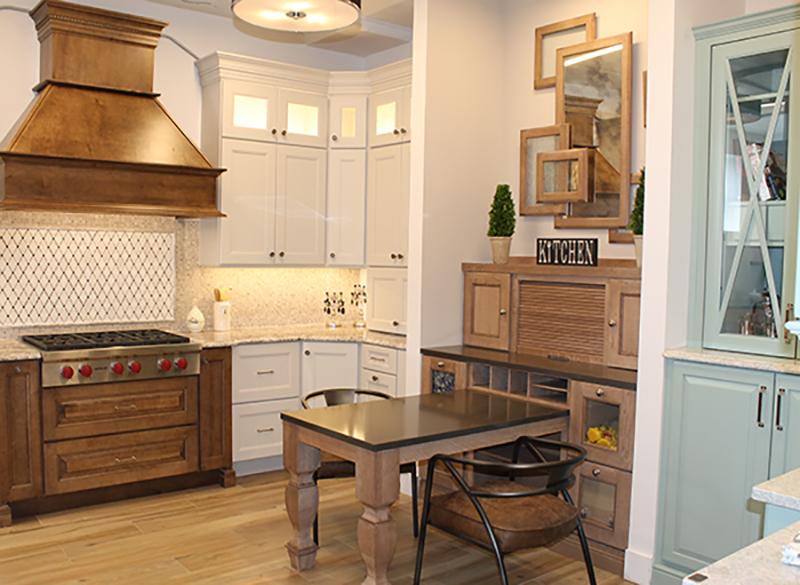
However, the choices for door style, finish, color, and hardware are not either-or. That’s why we recommend working with a designer who understands all the options available as well as your aesthetic and lifestyle. He or she will help ensure you achieve the look and feel you’re going for, while simplifying the decision-making process.
MAINTENANCE: KEEPING CABINETRY LOOKING GREAT
Different materials require different kinds of care. For example, glass doors are great for displaying showpieces and for adding a feeling of airiness to the kitchen. But the glass will need to be cleaned differently and more frequently than the rest of the cabinetry. Different finishes on door handles and drawer pulls may also require different kinds of care. It’s always best to consider maintenance requirements when selecting cabinetry materials and finishes.
SPECIALTY STORAGE: EVERYTHING IN ITS PLACE
A good designer takes both your wants and needs into consideration. Although specialty storage items, such as an in-cabinet spice rack and mixer lift, increase costs, they also greatly enhance the look and functionality of your new kitchen. Your designer should be able to help you decide what specialty storage you really need – and perhaps where you can find room in your budget for a “want!”



